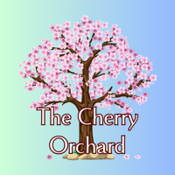
Explore this Show
Overview
Synopsis
On a frosty May morning while the cherry trees are in bloom, impoverished Russian aristocrat, Mrs. Ranevsky, returns to her decaying ancestral home with her daughter, Anya. Mrs. Ranevsky is heavily in debt and still grief-stricken by the premature death of her son five years earlier. Her financial crisis forces the family to auction off their estate, including their beloved cherry orchard. Varya, Mrs. Ranevsky’s older, adopted daughter, has been looking after the estate and is frustrated by her mother’s refusal to accept her predicament. Ignoring the practical advice of local businessman, Yermolay Lopakhin, the family cannot come to a consensus and take action, and the estate is eventually sold. Whilst the family sadly drink to the end of their home, Lopakhin reveals that it is he who has bought the estate. As the family prepare to leave, they hear their precious cherry orchard begin to be cut down. The play reflects the socioeconomic forces at work in Russia at the turn of the 20th century, including the rise of the middle class after the abolition of serfdom in the mid-19th century, and the declining status of the aristocracy.
Show Information
Context
Anton Chekhov wrote The Cherry Orchard in 1903 during the final year of his life, completing it while battling the advanced stages of tuberculosis. It premiered on January 17, 1904, at the Moscow Art Theatre, directed by Konstantin Stanislavski and starring Chekhov’s wife, Olga Knipper, as Mrs Ranevskaya. Chekhov envisioned the play as a comedy with farcical elements, satirizing a society unable to face change. However, Stanislavski’s direction leaned into the play’s melancholic
to read the context for The Cherry Orchard and to unlock other amazing theatre resources!Plot
Act One
It's early May in Russia at the turn of the 20th century. In the nursery of her ancestral estate, Lyubov Ranevskaya returns home after years in France, where she fled to escape the grief of her young son’s death. Her daughter Anya and Anya’s governess, Charlotta, have brought her back, hoping the return will help her heal. Alongside them is Yasha, Ranevskaya’s stylish yet insolent valet.
Awaiting them are old friends and servants: Lopakhin, a wealthy merchant whose father was
to read the plot for The Cherry Orchard and to unlock other amazing theatre resources!Characters
| Name | Part Size | Gender | Vocal Part |
|---|---|---|---|
|
Lead |
Female |
Spoken |
|
|
Lead |
Female |
Spoken |
|
|
Lead |
Female |
Spoken |
|
|
Supporting |
Female |
Spoken |
|
|
Supporting |
Male |
Spoken |
|
|
Supporting |
Male |
Spoken |
|
|
Supporting |
Female |
Spoken |
|
|
Supporting |
Male |
Spoken |
|
|
Supporting |
Male |
Spoken |
|
|
Supporting |
Male |
Spoken |
|
|
Supporting |
Male |
Spoken |
|
|
Supporting |
Male |
Spoken |
Songs
A song with an asterisk (*) before the title indicates a dance number; a character listed in a song with an asterisk (*) by the character's name indicates that the character exclusively serves as a dancer in this song, which is sung by other characters.
Monologues
Scenes
Key Terms
Naturalism is a theatrical style that seeks to depict life with accuracy, focusing on everyday speech, behavior, and settings. It often highlights ordinary people in realistic environments, emphasizing authenticity over theatricality. Emerging in the late 19th century, naturalism remains influential in contemporary drama.
Works not protected by copyright and available for free use or adaptation. Many classical plays, including Shakespeare's, fall into the public domain.
A theatrical movement that strives to depict everyday life and authentic behavior on stage. It often focuses on domestic settings and psychological depth.
A genre blending elements of tragedy and comedy, often leaving audiences in emotional or thematic tension.
Videos
Quizzes
Themes, Symbols & Motifs
Sorry! We do not currently have learning modules for this guide.
Quote Analysis
Sorry! We do not currently have learning modules for this guide.
